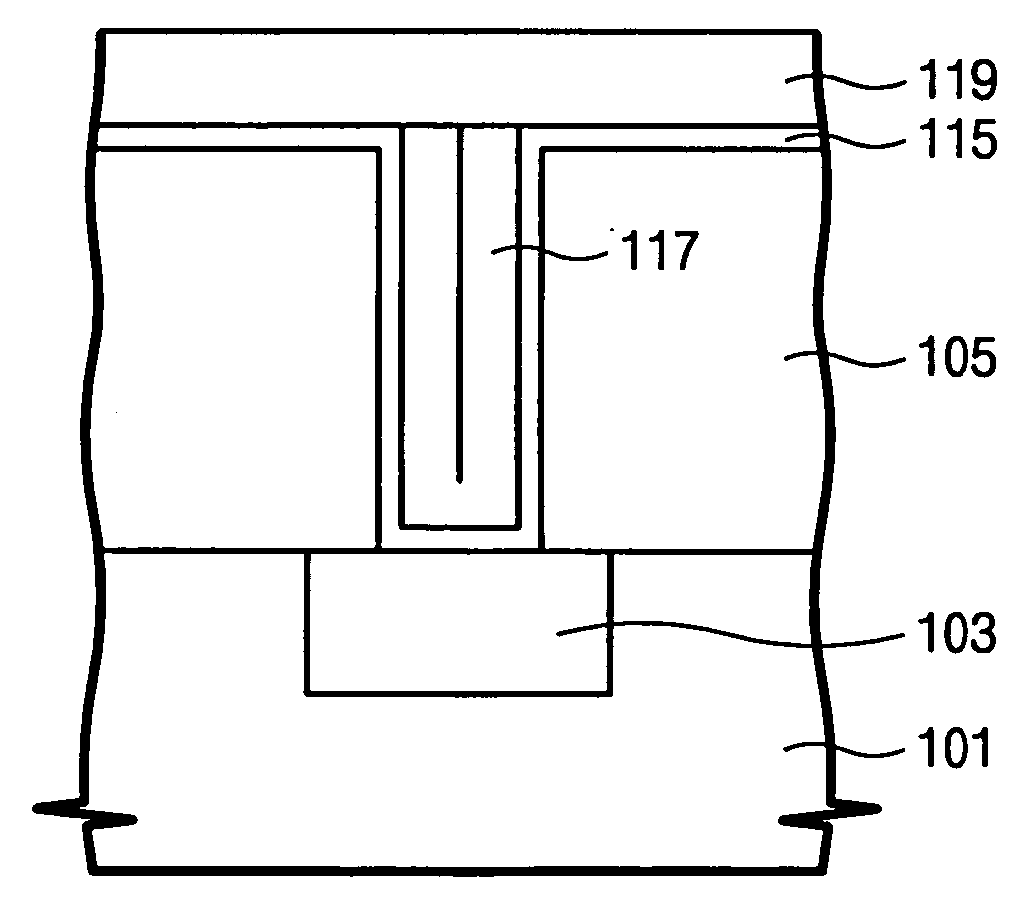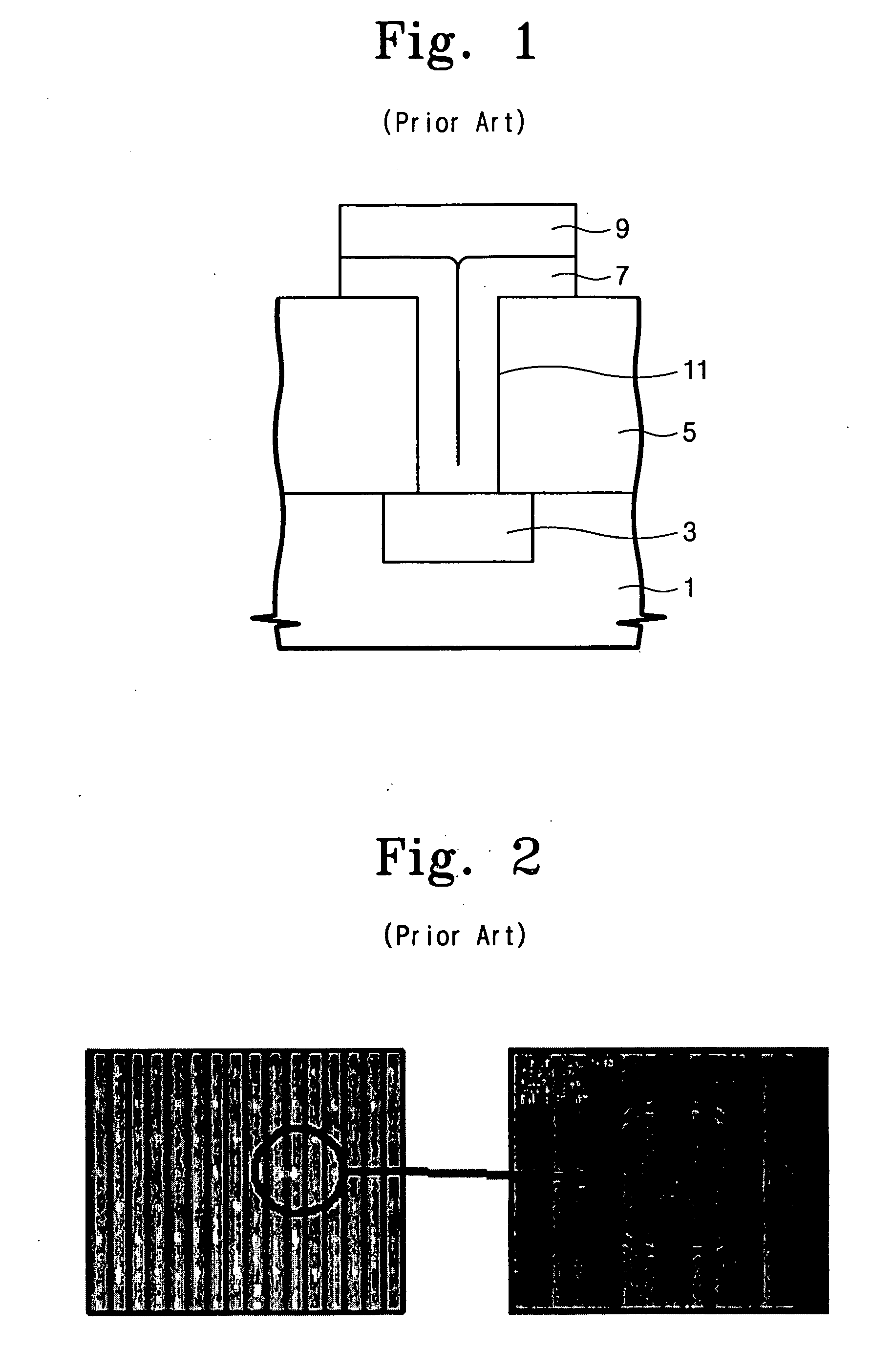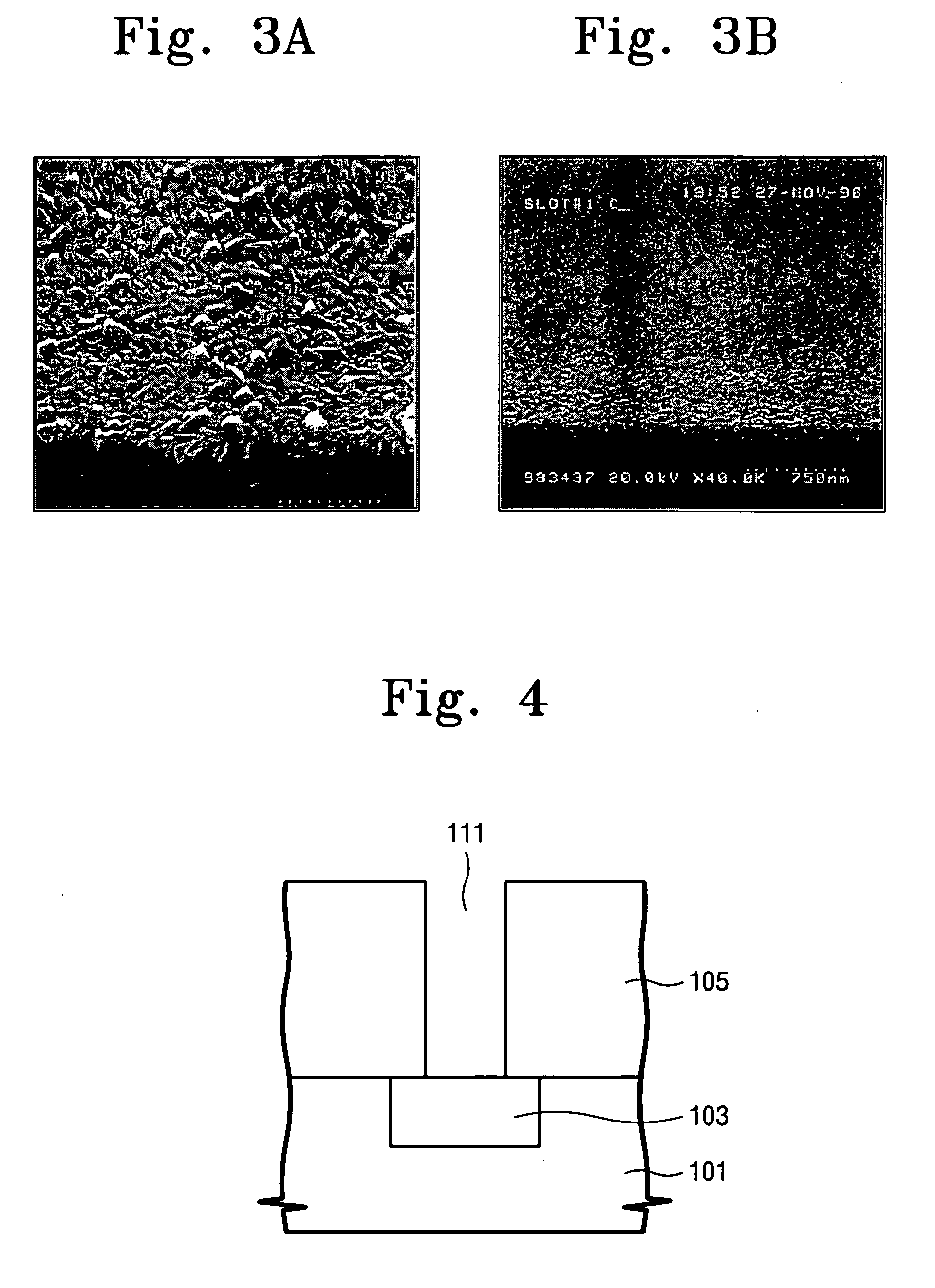Method for forming an electrical interconnection providing improved surface morphology of tungsten
a technology of tungsten and electrical interconnection, which is applied in the direction of semiconductor/solid-state device manufacturing, basic electric elements, electric apparatus, etc., can solve the problems of difficult optimization of process for plug and interconnection stripe application, difficult adjustment of focus, and distortion of the wafer on which the film is deposited, etc., to achieve the effect of easy alignment in the photo process
- Summary
- Abstract
- Description
- Claims
- Application Information
AI Technical Summary
Benefits of technology
Problems solved by technology
Method used
Image
Examples
first embodiment
[0027] FIGS. 4 to 9 are cross sectional schematic views illustrating a process for forming an electrical interconnection according to the present invention and FIG. 10 is a cross sectional schematic view illustrating a modified embodiment thereof.
[0028] Referring to FIG. 4, there is shown a substrate 101, preferably composed of monocrystalline silicon. The substrate 101 has a conductive area 103 formed therein. The conductive area 103 is a impurity active region formed by ion implantation into the substrate 101. Other structures such as a polycrystalline silicon pattern, an aluminum wiring pattern, a metal plug or the like, though not shown, may be formed in and on the substrate 101.
[0029] A dielectric layer 105, composed of insulating material such as borophosphosilicate glass (BPSG), spin-on-glass (SOG) or the like, is deposited over the substrate 101 to a thickness of between about 2,000 to 15,000 Angstroms. A contact hole 111 is formed through the dielectric layer 105 to the su...
second embodiment
[0043] Accordingly, the upper conductive layer can be formed to have a relatively good surface morphology, with a smaller grain size as compared to that of the lower conductive layer (plug), because a portion of it that is not formed on the contact plug is formed on the barrier layer. The barrier layer provides a surface morphology such that the upper conductive layer is formed thereon with a relatively low degree of surface roughness. In this manner, after formation of the contact plug with good step coverage, an interconnection stripe having a good surface morphology is formed on the barrier layer. FIGS. 11 and 12 are cross sectional schematic views illustrating a process for forming an electrical interconnection according to the present invention.
[0044] Referring to FIG. 11, a substrate 301, a conductive area 303, a dielectric layer 305, a contact hole 311, a barrier layer 315 and a lower conductive layer 317 are provided using same method as that of the first embodiment.
[0045] ...
PUM
 Login to View More
Login to View More Abstract
Description
Claims
Application Information
 Login to View More
Login to View More - R&D
- Intellectual Property
- Life Sciences
- Materials
- Tech Scout
- Unparalleled Data Quality
- Higher Quality Content
- 60% Fewer Hallucinations
Browse by: Latest US Patents, China's latest patents, Technical Efficacy Thesaurus, Application Domain, Technology Topic, Popular Technical Reports.
© 2025 PatSnap. All rights reserved.Legal|Privacy policy|Modern Slavery Act Transparency Statement|Sitemap|About US| Contact US: help@patsnap.com



